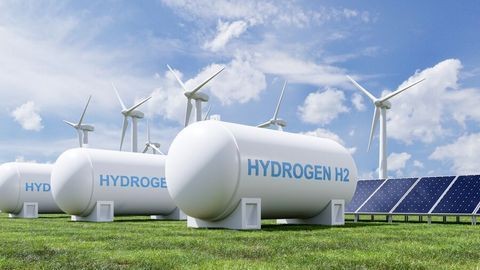U.S. Supreme Court Trims Back EPA Efforts to 'Tailor' Greenhouse Gas Permitting Requirements under the Clean Air Act
Client Alert | 9 min read | 06.25.14
On June 23, 2014, the U.S. Supreme Court held that the Clean Air Act (CAA) precludes the U.S. Environmental Protection Agency (EPA) from subjecting sources to Prevention of Significant Deterioration (PSD) and Title V permitting exclusively based on greenhouse gas (GHG) emissions. Utility Air Regulatory Group v. Environmental Protection Agency, et al.1
Reversing the Court of Appeals for the D.C. Circuit,2 the Court held that the CAA neither compels nor permits EPA to require a stationary source to obtain a PSD or Title V permit "on the sole basis of its potential [GHG] emissions."3 The Court did not, however, completely preclude EPA's regulation of GHGs under the PSD program, affirming that EPA may require sources that trigger PSD permitting based on emissions of "conventional" pollutants to comply with the "best available control technology" (BACT) requirements for GHGs.
The opinion does not directly affect EPA's ability to regulate GHGs under other provisions of the CAA. Indeed, the Court, in several places, noted that it was not addressing every interpretative issue raised by the petitioners and that other requirements of the CAA were not at issue in the litigation, including CAA section 111, which is the basis for EPA's recently proposed standards for new and existing power plants.4 At the same time, however, the Court indicated that EPA could not "rewrite" the CAA to fit policies regarding GHGs and that Massachusetts v. EPA5 "does not strip EPA of authority to exclude GHGs from the class of regulable air pollutants under other parts of the Act where their inclusion would be inconsistent with the statutory scheme."6
Background
In 2010, EPA issued GHG standards for light duty vehicles. Around the same time, EPA affirmed its interpretation that PSD and Title V permitting requirements extend to air pollutants that are subject to "actual control" of emissions under the Clean Air Act (the so-called "Triggering Rule"). In making this determination EPA recognized that the statutory threshold level of emissions for "major emitting facilities" or "major sources," if applied to GHG emissions, would "radically expand"7 the reach of those programs to a large number of sources that historically had not required PSD or Title V permits. Thus, EPA subsequently issued a "Tailoring Rule" to "phase in" the initial application of the PSD and Title V requirements to only the largest sources of GHG emissions, rather than all sources meeting the CAA's definition of "major emitting facility" or "major source."8 The Tailoring Rule raised the statutory major source threshold of 100/250 tons per year to 75,000/100,000 tons per year, depending on the source.
Numerous parties challenged the Triggering Rule, the Tailoring Rule, and other GHG-related actions by EPA. Among other holdings, the Court of Appeals for the D.C. Circuit upheld the Triggering Rule, agreeing with EPA that the "any air pollutant" language in the definition of "major emitting facility" compelled EPA to impose PSD and Title V permitting requirements based on GHG emissions.9 Further, because the CAA required EPA to impose permitting requirements on GHG-emitting stationary sources, and the Tailoring Rule relaxed those requirements, the D.C. Circuit held that the petitioners had no injury and thus no standing to challenge the Tailoring Rule.10
Industry petitioners appealed the D.C. Circuit opinion, and the Supreme Court granted certiorari on the limited issue of: "Whether EPA permissibly determined that its regulation of [GHG] emissions from new motor vehicles triggered permitting requirements under the [CAA] for stationary sources that emit [GHGs]."11
Majority Opinion Rejects EPA's Triggering and Tailoring Rules
In a decision authored by Justice Scalia, the Supreme Court reversed in part and affirmed in part the D.C. Circuit's opinion. First, the Court held that the CAA neither compelled nor permitted EPA to subject stationary sources to PSD and Title V requirements on the sole basis of a source's potential to emit GHGs.12 Both EPA and the D.C. Circuit, according to the Court, erred in concluding that the phrase "air pollutant" must have the same meaning in every part of the CAA. While the Act-wide definition of "air pollutant" may, as held in Massachusetts v. EPA,13 broadly include any "airborne compound," including GHGs, that phrase may have a "narrower, context-appropriate meaning" when used in operative provisions, like the PSD and Title V provisions.14 Citing EPA's own narrower interpretations of the phrase "air pollutant" in other operative provisions of the CAA, the Court found that the phrase need not have a uniform, expansive meaning across the entire statute.15 Hence, the phrase "any air pollutant" in the definitions of "major emitting source" and "major source" did not compel EPA to interpret the PSD and Title V provisions as applying to stationary sources based on their GHG emissions.16
The Court then proceeded to hold that it was impermissible for EPA to interpret the phrase "any air pollutant" in the PSD and Title V provisions as including GHGs. The Court cited evidence that the PSD and Title V programs were designed to apply to "a relative handful of large sources capable of shouldering heavy substantive and procedural burdens."17 Pointing to EPA's acknowledgement that defining "any air pollutant" to include GHGs for the purposes of PSD and Title V would greatly expand the scope of sources covered by those programs,18 the Court concluded that EPA had effectively re-written numerical thresholds for the PSD program established in the statute.19
The Court further emphasized that Massachusetts "did not hold that EPA must always regulate greenhouse gases as an 'air pollutant' everywhere that term appears in the statute, but only that EPA must 'ground its reasons for action or inaction in the statute.'"20 Thus, EPA could consider whether to regulate GHGs under other provisions of the CAA based on their statutory context. Otherwise, the majority opinion expressed skepticism with regard to new interpretations of the CAA that might put forth an "unheralded power to regulate 'a significant portion of the American economy.'"21 Because this expansion would be inconsistent with the "Act's structure and design,"22 and because there is no clear congressional statement supporting EPA's exercise of such broad regulatory authority,23 the Court held that EPA's interpretation was not permissible.24
EPA May Still Require "Anyway" Sources to Comply with GHG BACT
The Court did not, however, completely eliminate EPA's ability to regulate GHG emissions under the PSD program. It held that EPA may require sources otherwise subject to PSD requirements due to their emission of conventional pollutants (e.g., sulfur dioxide, nitrogen oxides, etc.) to also comply with BACT emissions standards for GHGs. Recognizing that the PSD program's BACT requirements apply to "any pollutant subject to regulation," rather than "any air pollutant," the Court held that EPA could reasonably include GHGs within the definition of the former; the EPA's interpretation was not "so disastrously unworkable, and need not result in such a dramatic expansion of agency authority" as to make EPA's interpretation unreasonable.25
Dissenting Opinions
Although Justice Breyer concurred with the majority opinion regarding the application of BACT requirements to a GHG emissions from sources already subject to the PSD program (known generally as "anyway" sources), he disagreed with the majority's holding that EPA could not impose PSD and Title V requirements on sources based on their GHG emissions alone. Justice Breyer explained that there was more than one way to interpret the PSD and Title V provisions to avoid an absurd result. He argued that while the majority opinion chose to interpret the phrase "any air pollutant" as excluding GHGs and thus limit the scope of the program by pollutant, EPA's interpretation, as expressed through the Tailoring Rule, simply created an exception to the phrase "any source" and thus limited the scope of sources subject to regulation.26 In Justice Breyer's view, the latter interpretation was more consistent with the purposes of the PSD program to regulate emissions only from large sources (regardless of the pollutant emitted), and the overall purpose of the CAA to "protect and enhance the Nation's air resources."27 Thus, Justice Breyer would have upheld EPA's interpretation of the statute and the Agency's discretion to define the sources subject to regulation.
Justice Alito concurred with the majority opinion that EPA may not require PSD and Title V permitting solely based on a source's GHG emissions, but disagreed on the majority's holding on BACT. Justice Alito found that the term "pollutant" should be the same in the definition of "major emitting facility" (any air pollutant) and in PSD's BACT provision (any pollutant subject to regulation"), and thus the Court's holding that "any air pollutant" did not include GHGs also precluded GHGs from being a "pollutant subject to regulation" for the purposes of the BACT provision.28
1 No. 12-1146 (decided June 23, 2014).
2 Coalition for Responsible Regulation, Inc. v. EPA, 684 F.3d 102 (D.C. Cir. 2012) (per curiam).
3 Slip. op. at 10.
4 Id. at 14, nt. 5; See also: Slip. Op. at 16, nt. 6, 20, nt. 7.
5 549 U.S. 497.
6 Id. at 14.
7 Id. at 7.
8 Id. During phase 1 (January 2, 2011 – June 30, 2011), no source would become newly subject to the PSD program solely on the basis of its GHG emissions, yes sources required to obtain PSD permits anyway because of their emission of conventional pollutants would need to comply with the "best available control technology" (BACT) for GHGs if they emitted those gases in significant amounts, defined as at least 75,000 tons per year CO2e. During phase 2 (July 1, 2011 – June 30, 2012), sources with the potential to emit at least 100,000 tons per year CO2e of GHGs would be subject to PSD and Title V permitting for construction and operations (modifications that would increase GHG emissions by at least 75,000 tons per year CO2e would also be subject to regulation). EPA issued several additional rulemakings, indicating that it would not lower the applicable thresholds established for phase 2 until at least 2016.
9 See Coalition for Responsible Regulation, Inc. v. EPA, 684 F.3d at 143.
10 Id. at 146.
11 Slip. op. at 9.
12 Id. at 10-24.
13 549 U.S. 497 (2007).
14 Slip. op. at 11.
15 Id. at 11-13.
16 Id. at 15-16.
17 Id. at 18.
18 Id. at 17.
19 Id. at 21, 23-24.
20 Id. at 13, emphasis in opinion.
21 Id. at 19, referencing Brown & Williamson, 529 U.S. at 159.
22 Id. at 17.
23 Id. at 19.
24 Id. at 20.
25 Id. at 28.
26 Breyer Op. at 7.
27 Id. at 9-11.
28 Alito Op. 3-4.
Contacts
Insights
Client Alert | 2 min read | 12.19.25
GAO Cautions Agencies—Over-Redact at Your Own Peril
Bid protest practitioners in recent years have witnessed agencies’ increasing efforts to limit the production of documents and information in response to Government Accountability Office (GAO) bid protests—often will little pushback from GAO. This practice has underscored the notable difference in the scope of bid protest records before GAO versus the Court of Federal Claims. However, in Tiger Natural Gas, Inc., B-423744, Dec. 10, 2025, 2025 CPD ¶ __, GAO made clear that there are limits to the scope of redactions, and GAO will sustain a protest where there is insufficient evidence that the agency’s actions were reasonable.
Client Alert | 7 min read | 12.19.25
In Bid to Ban “Woke AI,” White House Imposes Transparency Requirements on Contractors
Client Alert | 5 min read | 12.19.25
Navigating California’s Evolving Microplastics Landscape in 2026
Client Alert | 19 min read | 12.18.25
2025 GAO Bid Protest Annual Report: Where Have All the Protests Gone?



